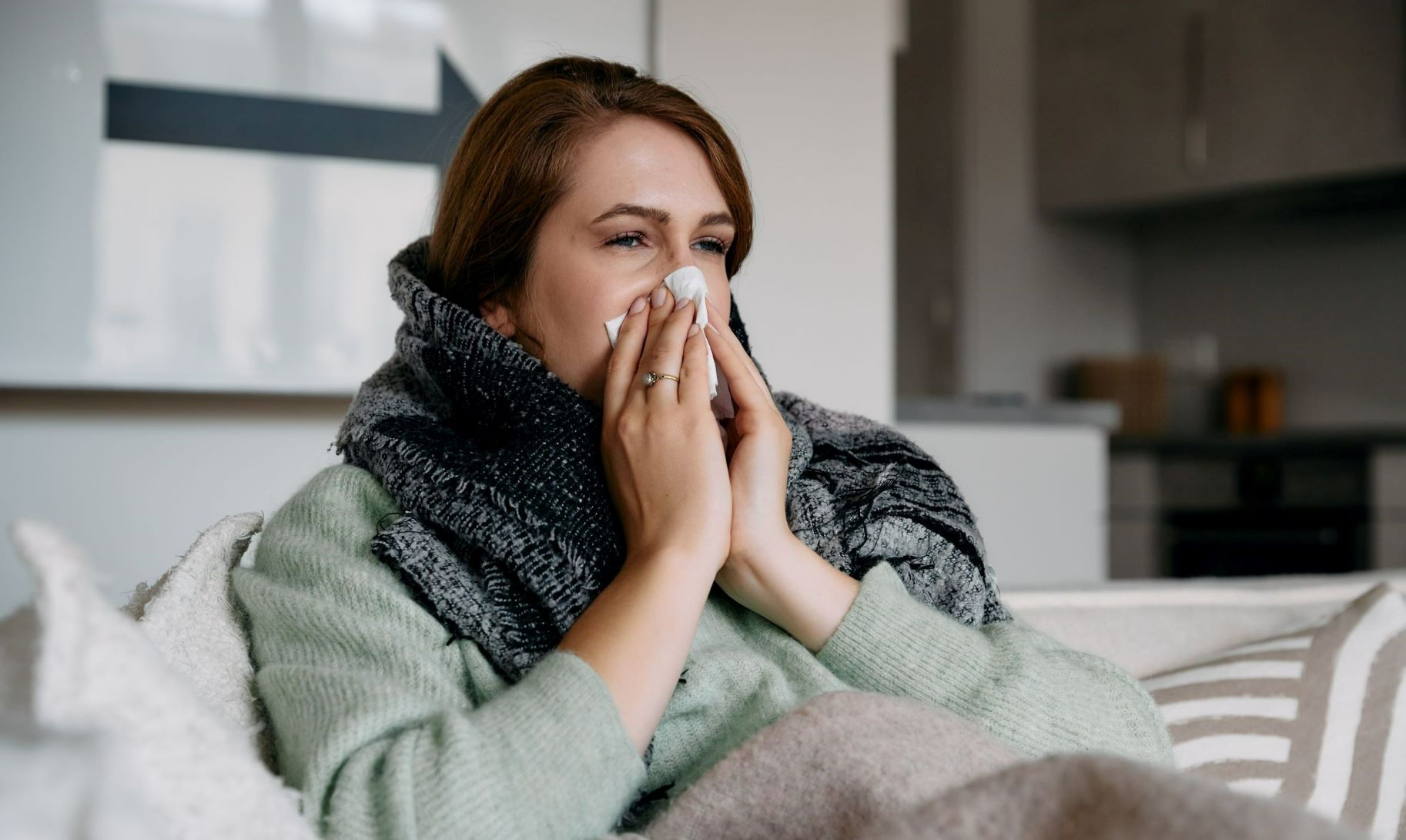Overcoming COVID-19 with type 1 diabetes

For close to the past year we have all changed the way we live our lives — staying at home, seeing friends and family members outside from six feet away, and wearing masks whenever we are in public. Living with diabetes also heightens the anxiety around contracting COVID-19 since the virus may make it more difficult to keep blood sugar levels in range. In December 2020, Ryan, a Medtronic Corporate Account Manager, and his family tested positive for COVID-19, and he was left trying to manage his diabetes and the prominent COVID-19 symptoms he was experiencing. Below he shares his family’s story and how he overcame his experience with the virus.
Prior to the COVID-19 pandemic, I lived a very active lifestyle — traveling several weeks a month for work, keeping up with my wife and our four children, and prioritizing my health through running and exercise. I also have been living with diabetes for more than 20 years and have used a pump to help me stay on top of my diabetes management for a large majority of that time. For me, a pump has helped me keep my blood sugar levels in range. This helps me focus on everything going on in life and for the most part keeps my diabetes in the background.
I found that to be even more apparent late last year when I tested positive for COVID-19. Despite taking many precautions to stay at home and socially distance, my wife, Vanessa, was exposed to COVID-19 in November 2020. She quarantined at home, but within a few weeks three of our children and I contracted the virus as well.
Thankfully Vanessa and our children all had mild symptoms, primarily consisting of a fever that lasted 1–2 days and fatigue. I was especially thankful to see that the symptoms were minimal for my 8-year-old daughter Lainey, who, like me, has type 1 diabetes. I, on the other hand, had a very different experience than the rest of my family.
In addition to having type 1 diabetes I also suffer from asthma, allergies (grass, trees, mold, dust, etc.), and another autoimmune illness. I believe that this ‘perfect storm’ is part of what led to the virus affecting me as it did.
My first symptoms did not include a fever. Instead I had what felt like a sinus infection for a few days that progressed into extreme fatigue, forcing me to sleep 14–16 hours a day, rely on caregiver support from my wife, and care coordination with my doctor. I was able to manage most of my symptoms from home; however, I was going into a care facility regularly to get chest X-rays to monitor my lungs. When I went in for my second X-ray, my doctor saw pneumonia on the lower left ventricle of my lungs, as well as several lesions. This is when I was prescribed prednisone and antibiotics through an IV.
While I was managing these symptoms, it became challenging to also stay on top of monitoring my blood sugar levels. Many times, over those few days Vanessa or one of my children would need to wake me to eat or drink to stay hydrated. I found that if I did not eat, and therefore could not bolus for a meal, my risk of ketones and even going into diabetic ketoacidosis (DKA) increased ― even without having periods of high blood sugar, so this was an important aspect of managing the situation.
I was sleeping so much, and often quite out of it, so I had to rely on my MiniMed 670G system regulating my glucose in the background. Thanks to this technology, my diabetes management didn’t suffer.

I am more thankful today than I have ever been for the SmartGuard technology in my pump that allows for automated basal insulin delivery1.
As we have seen, COVID-19 shows itself in so many different ways, even among those of us with type 1 diabetes. I would encourage everyone to continue to wash your hands, wear a mask, socially distance, and make sure you always have enough diabetes supplies on hand. If you do contract COVID-19, stay vigilant and watch your symptoms closely.
Today, I am so thankful to say that the pneumonia and lesions have disappeared from my lungs and I am back to keeping up with my family, working, and exercising regularly. I definitely took my time getting back to the level I was at before I had COVID-19, but I am there now, and I hope my experience may help others with diabetes who are trying to navigate life during this pandemic.
1 Refers to SmartGuard™ Auto Mode. Some user interaction required. Individual results may vary.
The testimonial above relates an account of an individual’s experience with a Medtronic device. The account is genuine, typical and documented. However, this individual’s experience does not provide any indication, guide, warranty or guarantee as to the response or experience other people may have using the device. The experience other individuals have with the device could be different. Experiences can and do vary. Please talk to your doctor about your condition and the risks and benefits of Medtronic devices.
Important Safety Information MINIMED™ 670G SYSTEM
The Medtronic MiniMed™ 670G system is intended for continuous delivery of basal insulin (at user selectable rates) and administration of insulin boluses (in user selectable amounts) for the management of type 1 diabetes mellitus in persons, seven years of age and older, requiring insulin as well as for the continuous monitoring and trending of glucose levels in the fluid under the skin. The MiniMed™ 670G system includes SmartGuard™ technology, which can be programmed to automatically adjust delivery of basal insulin based on Continuous Glucose Monitor sensor glucose values and can suspend delivery of insulin when the sensor glucose value falls below or is predicted to fall below predefined threshold values.
The system requires a prescription. The Guardian™ Sensor (3) glucose values are not intended to be used directly for making therapy adjustments, but rather to provide an indication of when a fingerstick may be required. A confirmatory finger stick test via the CONTOUR®NEXT LINK 2.4 blood glucose meter is required prior to making adjustments to diabetes therapy. All therapy adjustments should be based on measurements obtained using the CONTOUR®NEXT LINK 2.4 blood glucose meter and not on values provided by the Guardian™ Sensor (3).
Always check the pump display to ensure the glucose result shown agrees with the glucose results shown on the CONTOUR®NEXT LINK 2.4 blood glucose meter. Do not calibrate your CGM device or calculate a bolus using a blood glucose meter result taken from an Alternative Site (palm) or from a control solution test. It is not recommended to calibrate your CGM device when sensor or blood glucose values are changing rapidly, e.g., following a meal or physical exercise. If a control solution test is out of range, please note that the result may be transmitted to your pump when in the “Always” send mode.
WARNING: Medtronic performed an evaluation of the MiniMed™ 670G system and determined that it may not be safe for use in children under the age of 7 because of the way that the system is designed and the daily insulin requirements. Therefore this device should not be used in anyone under the age of 7 years old. This device should also not be used in patients who require less than a total daily insulin dose of 8 units per day because the device requires a minimum of 8 units per day to operate safely. |



